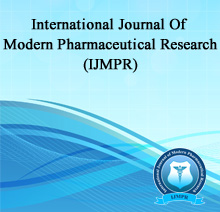RETROSPECTIVE STUDY ON DEMOGRAPHIC AND PREVALENCE OF COMMON DISEASES OF OWNED DOG IN JUBA CITY, CENTRAL EQUATORIA STATE/SOUTH SUDAN
Lily Poulino*, Jaja Lewis Khamis, Adill Salman, Jubara Ambrose Samuel, Ochi Erneo Bernardo and Abdalla A. Abdelrahim
ABSTRACT
The increased urbanization of Juba city and the influx of people following independence of South Sudan, enhanced the culture of dog ownership for security and safeguarding against theft and robbery. The Untoward related effects associated with dog ownership is the drive for conducting this study aiming to determine the demographic characteristics of owned dogs as well as common diseases among owned dogs in Juba city. Two government clinics were purposely chosen for retrospective collection of data from outpatients’ department register for a period of five years (2017-2021). A total of 8,504 dogs were recorded, with local breeds (95.1%) and males (91.4%) being the majority. Most dogs were under one year old (68.0%), followed by those aged 1–3 years (25.6%) and over three years (6.4%). A total of 9,016 disease cases were documented, with tick infestations (49.0%), mange (13.7%), and internal parasites (10.5%) being the most prevalent. Age-specific trends showed that parvovirus (62.2%) and leptospirosis (41.1%) were most common in dogs under one year old, whereas babesiosis (53.4%) and rabies (59.0%) were highest in dogs aged 1–3 years. Chronic diseases such as arthritis (69.6%) and ascites (69.5%) were significantly more prevalent in dogs over three years old. Disease prevalence was also influenced by sex and seasonality, with males (92.8%) more affected and higher infection rates during the wet season (73.5%). The findings emphasize the urgent need for targeted veterinary interventions, including age-specific vaccination, parasites control, and public health awareness, to reduce disease burden and improve canine health in Juba.
[Full Text Article] [Certificate Download]


